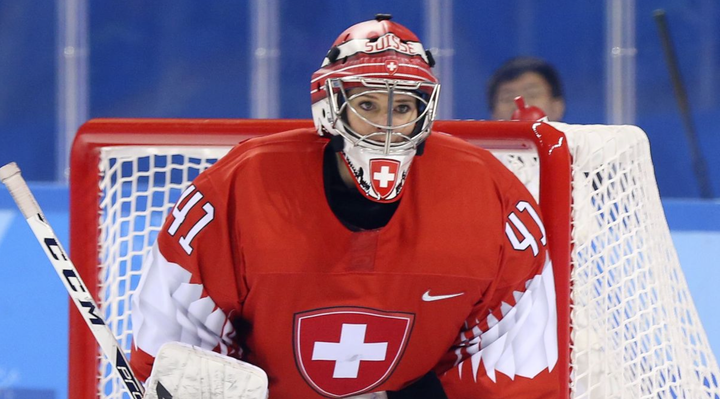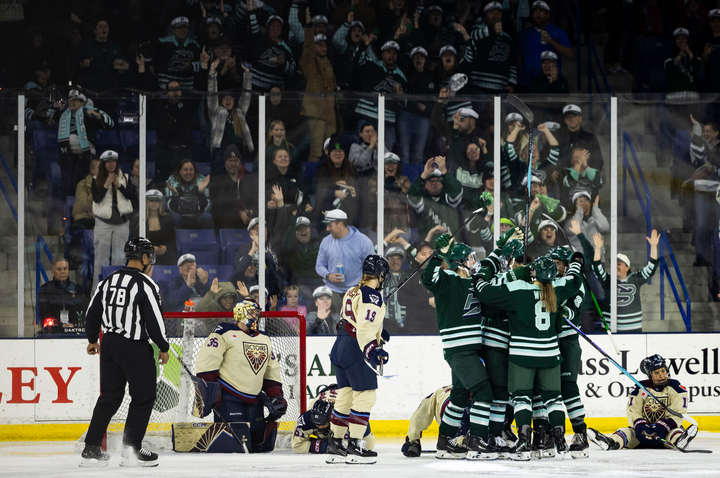Women’s NCAA College Hockey 101
A primer to NCAA women’s college hockey
Starting this season, we’re introducing a series titled “Women’s Hockey 101.”
Our goal is to make women’s hockey more accessible for everyone, from brand new fans to seasoned women’s hockey vets. We know a lot of people who want to get into women's hockey but don't know where to start. There are an awful lot of leagues, teams, player, tournaments, etc. to keep up with, and it’s our mission to give you all the basics about everything women’s hockey.
No matter where you are in your women’s hockey fandom, keeping up with everything can be hard, and we want to make your lives easier. Welcome to Women’s Hockey 101!
A brief history of women’s hockey in the NCAA
It was only in 2000 that the National Collegiate Athletic Association officially recognized and sanctioned women’s hockey as an NCAA sport. But that’s not to say women’s college hockey didn’t exist before then.
Brown University is credited with having the first women’s college hockey team, started in 1965, named the Pembroke Pandas. Their first opponent was the men’s junior varsity team who played with brooms.
51 years ago in February, the Pembroke Pandas, the first women's ice hockey team in the nation, played their first...
Posted by Brown Annual Fund on Thursday, February 23, 2017
Cornell University skated on the scene next in 1971, followed by Yale in 1975. Other Ivy League schools as well as University of Minnesota-Duluth and University of New Hampshire formed teams in the following years.
In 1976, Brown hosted the first Ivy League women’s ice hockey tournament between Yale, Cornell, and Princeton. Cornell won.
In 1997, women’s ice hockey took another step closer to the version we know today. Funded by the US Olympic Committee, the American Women’s College Hockey Alliance was formed. Along with it came the first iteration of a national championship game and also the Patty Kazmaier Award, awarded to the top female hockey player in the nation. New Hampshire won the first national championship game, though it's not technically counted in the national championship tally.
In 1999, the Western Collegiate Hockey Association (WCHA) joined the ECAC in an attempt to have the NCAA sanction women’s hockey for the 2000-2001 season.
The Minnesota-Duluth Bulldogs won the first official National Championship, setting off a reign of 13 straight WCHA champions.
Hockey East and College Hockey America would join in 2002, rounding out NCAA Division 1 women’s hockey as we know it today.
Women’s college hockey today
Today there are 36 teams in NCAA Division 1 women’s hockey, spread across four conferences with one independent team.
There is not a lot of conference movement frequently. The biggest changes came after the 2016-17 season when North Dakota folded their women’s hockey team. In 2018-19, Holy Cross joined Hockey East.
Each conference has its own playoffs to crown a champion and each conference champions gets an automatic bid into the national tournament. The other four at-large spots are filled according to Pairwise Rankings. The slightly ambiguous equation takes into account results versus common opponents, head-to-head competition, and Ratings Percentage Index (another equation that factors in a team’s record, their opponents’ winning percentage, and their opponents’ opponents’ winning percentage).
The national tournament is officially called the “National Collegiate Women’s Ice Hockey Championship.” This differs from other NCAA sports, such as men’s hockey, because in women’s hockey there is no Division II tournament. According to NCAA rules, if there’s no D-II tournament those teams compete as D-I members. However, to be eligible for the National Championship tournament a team must schedule 20 games against D-I and II teams, not Division III teams. Most of the D-II and D-I independent teams play against D-III teams making them ineligible. But, in 2017-18, a “scheduling alliance” was formed with six independent teams in order to create what BC Interruption calls a “pseudo-conference.” (You can read more about this in our 5 storylines to watch heading into the ‘17 season article).
Back to the tournament itself. It is a single elimination, three round tournament. The first round is played at campus sites. The four teams that emerge move on the Frozen Four, played at a predetermined location over a weekend. Usually, there is a day between the semifinals and the finals.





Comments ()